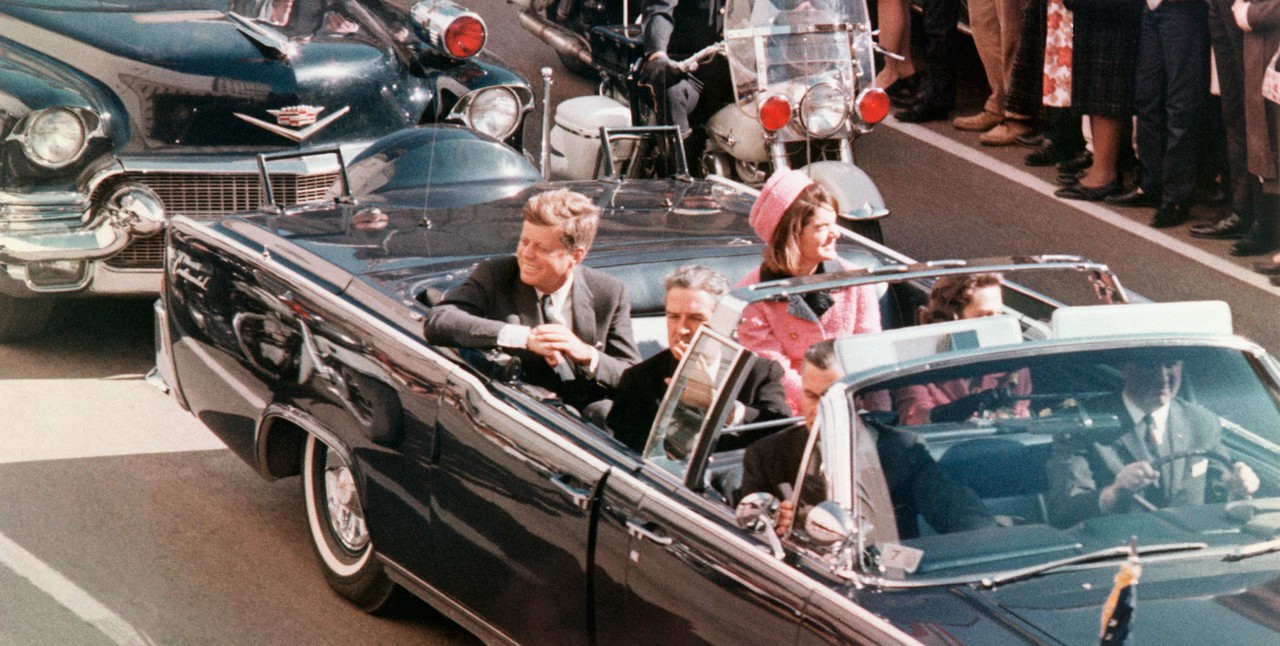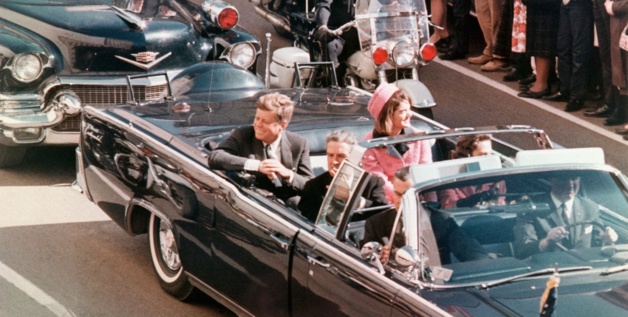A lot of books has been published to commemorate the fiftieth anniversary of Kennedy's assassination. Among them stands the testimony of one of the only two French journalists present at Dallas right after the event: Philippe Labro. He remembers America thunderstruck by the news, and the confusion in the police headquarters where had been detained successively Oswald and Ruby.
Philippe Labro, while correspondent for the famous french newspaper France Soir's in the United States, had crossed JFK before Dallas. He remembers the man behind the President that he had discovered especially in the White House. This is this two faced Kennedy, as charismatic as imperfect, which is pictured in this book. If he breathed youth, Kennedy never stopped being a victim of his body, like Franklin Delano Roosevelt before him. Sick? Imperfect? No matter: Kennedy was "J as Jackpot. F as Future. K as Kilowatt". It is this icon which had been swept and sublimated by a few shots fired from the sixth floor of the School Book Depository in Dallas.
Philippe Labro, while correspondent for the famous french newspaper France Soir's in the United States, had crossed JFK before Dallas. He remembers the man behind the President that he had discovered especially in the White House. This is this two faced Kennedy, as charismatic as imperfect, which is pictured in this book. If he breathed youth, Kennedy never stopped being a victim of his body, like Franklin Delano Roosevelt before him. Sick? Imperfect? No matter: Kennedy was "J as Jackpot. F as Future. K as Kilowatt". It is this icon which had been swept and sublimated by a few shots fired from the sixth floor of the School Book Depository in Dallas.
« The President had been shot! »
President Kennedy knew that coming to Dallas was not without risk. The fact that he had denounced segregation made him a persona non grata in Texas. But elections were approaching and it was necessary to cast new votes. He arrived in Dallas on the morning of November 22nd 1963, along with Jackie Kennedy. The weather was beautiful and he had requested his car to be top down. He had to cross the city before going to have lunch, in the Trade Mark. He was sitting in the back of the Lincoln Continental, next to his wife, and had the surprised to be well received by the crowd. The wife of the Governor of Texas, sat in front of Jackie Kennedy, at the left of her husband, even noted that he could not say that Dallas did not love him.
The car was riding slowly. It left Main Street to engage Houston Street and begin a sharp turn on Elm Street. Dealey Plaza was the end of the presidential trail: the procession passed the Texas School Book Depository. A few seconds later, a burst of shot rang out. The President fell down and then the governor collapsed. Jackie hurried to the rear of the vehicle. Clinton J. Hill, secret agent responsible of her protection rushed from the car following the presidential limousine. The presidential motorcade was now redirected to the hospital, but it was already too late. Half an hour after arriving there, the President died.
The car was riding slowly. It left Main Street to engage Houston Street and begin a sharp turn on Elm Street. Dealey Plaza was the end of the presidential trail: the procession passed the Texas School Book Depository. A few seconds later, a burst of shot rang out. The President fell down and then the governor collapsed. Jackie hurried to the rear of the vehicle. Clinton J. Hill, secret agent responsible of her protection rushed from the car following the presidential limousine. The presidential motorcade was now redirected to the hospital, but it was already too late. Half an hour after arriving there, the President died.
Witness
After the shock, while all eyes were turned to the state funeral of the President at Washington, Philippe Labro was in Dallas. At the police headquarter, he saw Oswald, questioned policemen and discussed with the police commissioner. He also met a strange man who gave him his business card: a man named Ruby. He was also one of the first to trace the path of Oswald up until his arrest, and he followed later for the French press all the twist of successive investigations.
But half a century after the case it is to the facts that Philippe Labro returns. As, about the murder, of assumptions, of conspiracy theories, everything seems to have been said. Of course, all the archives have not yet been released to the public, but everyone has got his own idea, despite of knowing the truth.
And what are these facts? Are they those of the Warren Report? Those of the Garrison's investigation, from the name of the district attorney of New Orleans which decided to reopen the case of the murder of Kennedy in the late 1960s? Are they those of the U.S. House of Representatives Select Committee on Assassinations, which confirmed the Warren Report without rejecting any conspiracy theory? For Philippe Labro, beyond reports and gossip, only viewed things matters.
But half a century after the case it is to the facts that Philippe Labro returns. As, about the murder, of assumptions, of conspiracy theories, everything seems to have been said. Of course, all the archives have not yet been released to the public, but everyone has got his own idea, despite of knowing the truth.
And what are these facts? Are they those of the Warren Report? Those of the Garrison's investigation, from the name of the district attorney of New Orleans which decided to reopen the case of the murder of Kennedy in the late 1960s? Are they those of the U.S. House of Representatives Select Committee on Assassinations, which confirmed the Warren Report without rejecting any conspiracy theory? For Philippe Labro, beyond reports and gossip, only viewed things matters.
At the heart of chaos
But what did he see in Dallas? A sort of carnival fogged by amateurism. Indeed, according to him, what has to be remembered is of course primarily the fact that the secret services did not properly provided security to President Kennedy. It is also the ease with which anyone could access Oswald in the Dallas police station. It is finally the fact that the police were overwhelmed and that there was a real collusion with the world swirling around it, world where Jack Ruby had its place.
The assassination in Dallas is, without any doubt, the centerpiece of the "Kennedy's years". It is this murder, indeed, which by placing him in the fatal line of Lincoln, transcended him. But to his light responded the endless shadows of Oswald and Ruby. The mysteries of these two men may be the solution to the enigma of the JFK assassination.
From the disorder of the Dallas police headquarter where Philippe Labro plunges back, it is possible to be as close as possible to the mystery, and to rediscover a time not so long ago. Indeed, it is today only half a century ago that "the President had been shot" *.
* On a tiré sur le Président, Philippe Labro, NRF Gallimard, 2013.
The assassination in Dallas is, without any doubt, the centerpiece of the "Kennedy's years". It is this murder, indeed, which by placing him in the fatal line of Lincoln, transcended him. But to his light responded the endless shadows of Oswald and Ruby. The mysteries of these two men may be the solution to the enigma of the JFK assassination.
From the disorder of the Dallas police headquarter where Philippe Labro plunges back, it is possible to be as close as possible to the mystery, and to rediscover a time not so long ago. Indeed, it is today only half a century ago that "the President had been shot" *.
* On a tiré sur le Président, Philippe Labro, NRF Gallimard, 2013.





























